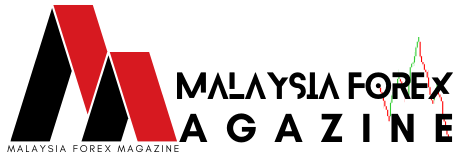The Internet of Things (IoT) refers to the vast network of interconnected devices that communicate and exchange data with each other over the internet. From smart thermostats and wearable fitness trackers to connected cars and industrial machinery, IoT technology has grown rapidly in recent years and is now an integral part of everyday life. IoT devices are making our homes smarter, improving healthcare, revolutionizing industries, and even shaping the future of cities. In this article, we’ll explore how IoT is transforming the way we live, work, and interact with the world around us.
1. Smart Homes: Enhancing Convenience and Comfort
One of the most visible ways IoT has impacted daily life is through smart home technology. Devices like smart thermostats, security cameras, lighting systems, and voice assistants are becoming increasingly popular in households. These IoT-enabled devices can be controlled remotely via smartphones or voice commands, offering a level of convenience and automation that was unimaginable just a few years ago.
- Temperature Control: Smart thermostats like Nest or Ecobee learn the habits of users and automatically adjust the temperature to optimize comfort while saving energy.
- Home Security: IoT-enabled security cameras and doorbell cameras, such as Ring, allow homeowners to monitor their property in real-time from anywhere. Motion sensors and alerts also enhance the overall security.
- Appliance Automation: From smart refrigerators that notify users when food is running low to automated vacuum cleaners, IoT devices are simplifying household chores and improving quality of life.
2. Wearable Technology: Transforming Healthcare and Fitness
Wearable IoT devices, such as fitness trackers and smartwatches, are changing how people monitor their health and stay fit. Devices like Fitbit, Apple Watch, and Garmin can track heart rate, steps, sleep patterns, and even alert users to potential health concerns.
- Health Monitoring: These wearables can continuously monitor vital signs and send real-time data to healthcare providers. This allows for early detection of conditions such as arrhythmias, making it easier for doctors to provide timely interventions.
- Chronic Disease Management: IoT devices are particularly beneficial for patients with chronic conditions like diabetes or hypertension. Devices like connected glucose monitors or blood pressure cuffs allow patients to monitor their conditions at home while automatically sending data to their doctors.
- Fitness Goals: For fitness enthusiasts, wearables provide detailed insights into physical activity, helping users set and achieve workout goals while offering feedback on performance.
3. Industrial IoT: Revolutionizing Manufacturing and Logistics
In the industrial sector, IoT has led to the rise of the Industrial Internet of Things (IIoT), where machines and equipment are connected to monitor and optimize industrial processes in real time. This transformation is often referred to as “Industry 4.0.”
- Predictive Maintenance: IoT sensors embedded in machines can detect wear and tear, alerting operators to potential breakdowns before they occur. This helps reduce costly downtime and improves the efficiency of manufacturing processes.
- Supply Chain Optimization: IoT devices in logistics help track goods in real time, ensuring smoother operations and more accurate delivery schedules. Connected sensors monitor everything from temperature control in refrigerated trucks to the location of goods in transit.
- Smart Factories: IoT-powered smart factories use real-time data from machines to adjust production lines dynamically. This enables manufacturers to respond more quickly to changes in demand or issues in the production process.
4. Smart Cities: Improving Urban Living
IoT is also being deployed in cities worldwide to improve infrastructure, enhance public safety, and reduce environmental impact. These smart cities use connected devices and data analytics to create more efficient urban environments.
- Traffic Management: IoT-enabled traffic sensors and smart traffic lights are reducing congestion in cities by dynamically adjusting traffic flows based on real-time conditions. This not only improves the efficiency of travel but also reduces emissions by decreasing idling times.
- Waste Management: Smart trash bins equipped with sensors can notify waste management services when they need to be emptied, optimizing waste collection routes and reducing unnecessary trips.
- Energy Efficiency: IoT technologies are helping cities manage energy consumption more effectively. Smart grids can adjust energy distribution based on real-time demand, while smart street lighting systems only turn on when pedestrians are present, reducing electricity waste.
5. Smart Agriculture: Enhancing Food Production
Agriculture is another sector benefiting from IoT technology. Smart farming is transforming traditional farming methods by using connected devices and sensors to monitor crops, livestock, and environmental conditions.
- Precision Farming: IoT sensors in the soil can monitor moisture levels, nutrient content, and temperature, helping farmers optimize irrigation and fertilization schedules. This ensures better crop yields and reduces waste of water and resources.
- Livestock Monitoring: Connected devices worn by livestock can track their location and health, allowing farmers to monitor animal welfare remotely and detect illnesses or other issues early.
- Drone Technology: IoT-enabled drones are being used to survey large tracts of farmland, providing real-time data on crop health and identifying areas that may require intervention.
6. Challenges and Concerns in IoT Adoption
While the IoT revolution brings numerous benefits, it also presents several challenges that must be addressed to ensure its long-term success.
- Security Risks: With millions of devices connected to the internet, IoT presents significant cybersecurity challenges. Hackers can exploit vulnerabilities in poorly secured devices, leading to data breaches or unauthorized control of devices.
- Privacy Concerns: The vast amounts of data collected by IoT devices raise concerns about how that data is used and who has access to it. Ensuring strong privacy protections is critical for widespread IoT adoption.
- Interoperability Issues: As the number of IoT devices and platforms grows, ensuring that different systems can communicate with each other effectively is a major challenge. Without standardization, the benefits of IoT could be limited.
Conclusion
The Internet of Things is already having a profound impact on various aspects of our lives, from our homes and workplaces to the cities we live in and the food we eat. As more devices become connected and technologies like AI and 5G further enhance IoT capabilities, we can expect even more transformative changes in the coming years. However, with these advancements come challenges, particularly in areas of security, privacy, and interoperability. For IoT to reach its full potential, these issues must be addressed, ensuring that connected devices not only improve our lives but do so safely and securely.
In the end, the IoT is not just about connecting devices; it’s about creating smarter, more efficient, and more responsive environments that adapt to our needs and help us live better lives.











